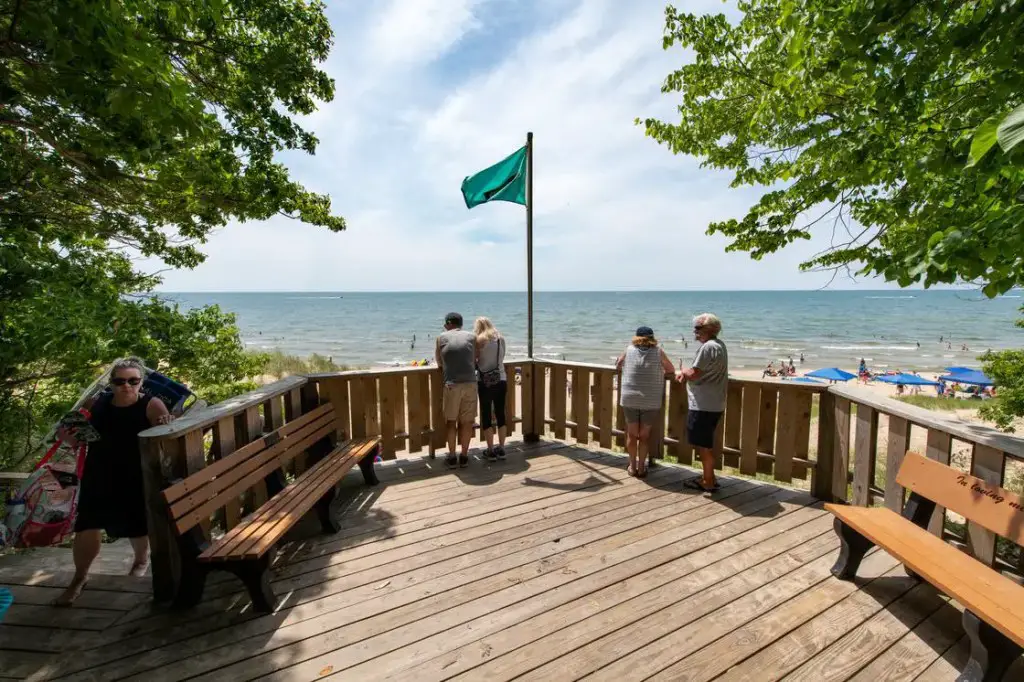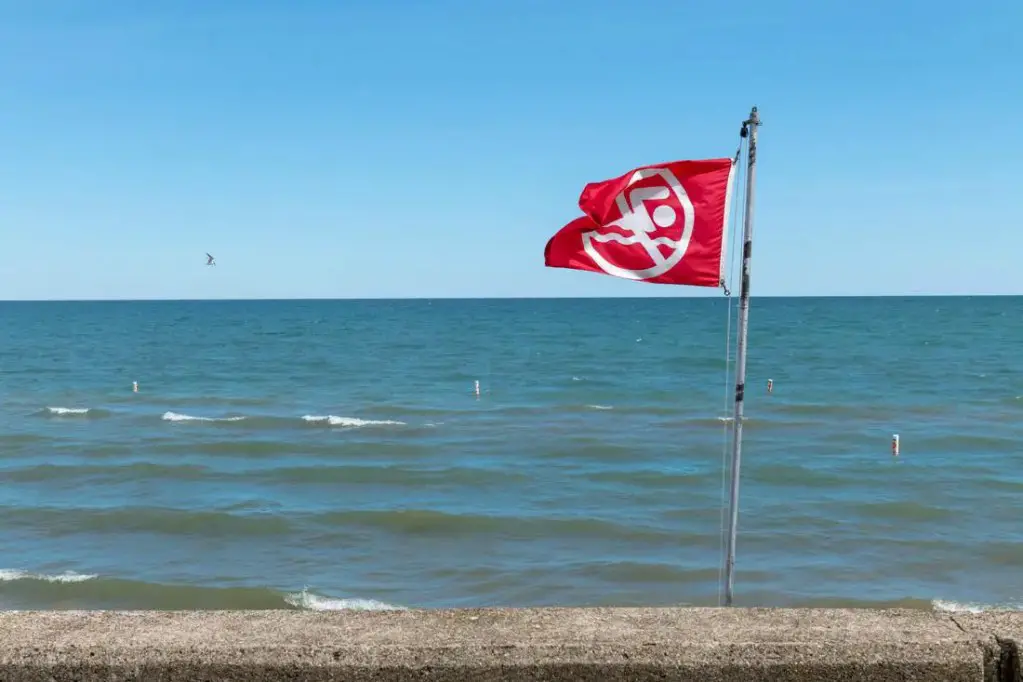To promote Great Lakes beach safety amidst changing conditions at Great Lakes beaches, double red warning flags have now been placed at state-designated swim beaches along the Great Lakes in Michigan state parks. This move is an important part to improve Great Lakes beach safety of the revamped Great Lakes flag warning system initiated last year by the Michigan Department of Natural Resources (DNR).
Improving Safety Measures: A Primary Concern

The DNR continuously reevaluates safety measures and public education efforts, particularly around Great Lakes safety. Recent years have seen a concerning increase in accidents and drownings on the Great Lakes. The Great Lakes Surf Rescue Project reports that from 2010 to 2022, there were 1,170 drownings, 108 of those occurring in 2022 alone.
Interpreting the Flag Warning System
The double red flags serve as a clear prohibition against entering the water from the beach. The DNR Land Use Order 5.1.6 declares it unlawful to enter the water from a state-designated swim beach under circumstances posing risks to human health and safety.
An Expanded Flag Warning System
The flag warning system advises visitors of current water conditions and any environmental warnings, with flags indicating varying levels of hazard. The double red flag denotes closed water access due to dangerous conditions, while other colored flags signify lower hazards.
Decoding the Great Lakes Flag Warning System

The flag warning system, an essential aspect of beach safety, provides visitors with updates on current water conditions and any relevant environmental alerts. The system now includes a range of flags, each denoting a specific level of hazard:
- Double Red Flag: Indicates that water access is closed due to dangerous conditions. Visitors are strongly advised not to enter the water under any circumstances.
- Red Flag: Signifies a high hazard with high surf and/or strong currents. It’s recommended to stay on the beach and avoid entering the water.
- Yellow Flag: Denotes a medium hazard with moderate surf and/or currents. Beachgoers should be cautious of potentially dangerous currents and high waves.
- Green Flag: Suggests a low hazard with calm conditions. Visitors are safe to enter the water but should remain cautious.
Understanding State-Designated Swim Beaches
State-designated swim beaches are marked by swim buoys, water depth of less than 5 feet at the time of buoy installation, available lifesaving equipment, and the Great Lakes flag warning system. Water depth is inspected approximately every 14 days and underwater obstacles are marked.
Further Safety Precautions for Great Lakes Beachgoers

Photos taken by Tyler Leipprandt in cooperation with the MI DNR. Credit goes to Tyler Leipprandt and Michigan Sky Media LLC.
In addition to the flag warning system, there are other safety measures to keep in mind: never swim alone, always closely supervise children, use U.S. Coast Guard-approved life jackets for inexperienced swimmers, be aware of dangerous currents near piers, breakwalls, and river outlets, and educate yourself about the types of Great Lakes currents and how to escape them. Visitors can access more information on Great Lakes beach safety at Michigan.gov/BeachSafety.
Final Thoughts on Great Lakes Beach Safety
The introduction of the double red flags is a crucial advancement in Great Lakes beach safety. It’s more than just a warning; it’s a life-saving tool to help swimmers understand and navigate the often unpredictable waters of the Great Lakes. As we continue to enjoy these natural resources, let’s prioritize safety, follow the flag guidance, and create a safer environment for everyone.



